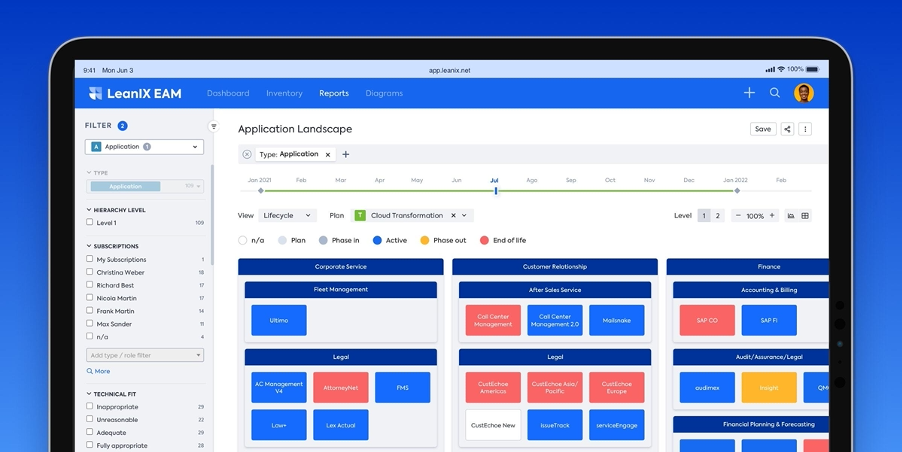
Digital transformation is evolving to encompass a far greater aspect of your organization than just your technology. Learn how to adapt your strategy into a complete business transformation.
"What's happened is digital transformation has really turned into business transformation. How do companies deflect the pressure from their people using digital technology? How do companies avoid having employees swivel-chair between 13 applications, on average, a day, burning up 33% of their productivity? And now, how do companies take generative AI to completely rethink the game in terms of their business processes?"
Digital transformation is no longer enough. As technology takes over every aspect of our lives, adapting your organization to continually leverage the latest technological marvels involves completely transforming your business on a permanent, iterative basis.
This need has become so pervasive that ServiceNow's CEO credited a focus on supporting business transformation as the key to their ongoing success in an interview with CNBC. As the market catches onto the need for business transformation, organizations are trying to figure out their first step.
Yet, before you can move beyond simple digital transformation and begin a comprehensive business transformation, you must first understand how your technology fits with your structure, processes, and goals. To do that, you need an enterprise architecture management tool like LeanIX EAM:
Let's explore further what business transformation means, and why it needs to be more comprehensive than just digital transformation.
What Is Digital Transformation, Really?
Digital transformation has been the key pre-occupation of enterprise for the past 30 years. No wonder, since the pace of technological change continues to accelerate, and digital technology now touches every part of our lives and business.
We work remotely, we buy online, we make purchasing decisions based on internet research, and we receive services through our devices. Yet, our business processes and tools remain stubbornly in the past.
Our entire enterprise culture was created before digital technology was available. Therefore, our processes are based on an offline structure and even our IT landscapes are often built upon early digital technology that was never intended to change.
When digital was first adopted by enterprise, it was thought to be a yes-or-no option. No-one expected technology to progress, let alone get to the point where it would iterate almost constantly and high-tech would become obsolete within months.
Now, as generative artificial intelligence (AI) offers innovations that seem like dreams come true, enterprise is fighting to modernize to a point where they can leverage these new tools. As even Google and Meta are playing catch-up on AI, others fear being left in the dust.
To keep up with the pace of change, companies are fighting to rebuild their processes and tools from the ground up; starting their business afresh with a better understanding of the present and the future. Completing a digital transformation like this once created a competitive advantage, but it's rapidly becoming a necessity to prevent organizations from falling into irrelevance.
Why Is Digital Transformation Failing?
Despite the growing necessity for companies to complete a digital transformation, research shows us that 70% fail with no return on investment. Why is such an important goal beyond the reach of so many?
The problem is precisely the focus on just a 'digital' transformation. Enterprise culture and practices haven't changed along with the evolution of the digital age, and a more holistic approach is required to achieve modernization.
If your processes and culture are as outdated as your technology, and you just update your technology, you simply create friction between your outdated processes and brand-new tech. This not only harms productivity, but also leads to employee frustration and staff turnover.
Even worse, without adopting a culture of continuous transformation to match the pace of technological change, you're not doing anything to make future transformations easier. This means you'll have to go through more transformations in future, with just as high a chance of failure.
To succeed, you need to change your culture and processes along with your technology. This is where enterprise architecture can support you by mapping the interactions between your technology and your business so you know exactly how to transform both in one initiative.
What Is Business Transformation And How Is It Different?
Business transformation is a complete, holistic change in your organization to adapt to the digital age. This doesn't just mean completing one transformation, but changing your business to make it agile enough to adapt to whatever happens in the market in the future.
This means looking at your entire IT landscape, as well as all your processes and your culture. By understanding how your technology connects to your business, you can ensure that your tools support your processes and your processes help you get the most out of your toolset.
For example, you may wish to take advantage of the larger talent pool you can access by hiring remote workers. To do that, you need to have effective remote working tools and systems that enable remote collaboration.
Beyond this, however, when you have a remote workforce supported by best-of-breed technology, you still need the co-operation of your team. If your employees aren't trained on your new systems and continue to have in-person meetings without involving your remote employees, they won't be able to collaborate with them and you won't gain any value from employing them.
If you train your employees on your new digital toolset and adapt your culture and processes to them, then you'll be able to take advantage of the power of digital technology. Only then will your new digital toolset truly empower your employees with innovative capabilities.
Why Business Transformation Succeeds Where Digital Transformation Fails
This holistic approach to digital transformation enables your organization to adapt to the digital age. It also allows you to leverage innovative technology.
Empowering your organization with processes and tools that support productivity and agility ensures long-term return on investment and your ability to adapt to the needs of the market. This is the secret to success in the modern business world.
Completing an agile business transformation allows you to optimize your profits, while also adopting a culture that supports future transformations, flexibility, and innovation. This puts you in the perfect position to adopt generative artificial intelligence (AI) and whatever new enterprise technologies the future holds.
Understanding How Your Business And Digital Fit Together
Succeeding in business transformation requires a detailed understanding of your business processes, organization, and culture, as well as the layout of your IT landscape. Most importantly of all, you must also have complete clarity on how your physical business interacts and depends on your digital infrastructure.
For example, updating your enterprise resource planning (ERP) system to a modern, cloud-based system that's compatible with generative artificial intelligence (AI), like SAP S/4HANA, will be challenging unless you understand your logistics and operations. You'll also need to know where processes depend on technology and vice versa.
This is where enterprise architects come in. Their discipline has been around since 1989, but enterprise architecture is becoming more important than ever as the methodology now serves to support business transformation.
Enterprise architecture is a strategic framework that aligns your strategy, processes, information, and technology to achieve your goals. As such, enterprise architects are perfectly placed to provide the insight you need to plan an effective business transformation.
To do that, however, they need the right tool to support modern, digital enterprise architecture. That tool is LeanIX EAM.
LeanIX EAM For Business Transformation

LeanIX EAM supports your enterprise architects in leveraging technology, making decisions, and managing change with our outcome-driven approach. Our flexible, best-practice data model is the foundation enterprise architects need to meet all your future business challenges.
EAM offers you a real-time overview of your IT landscape and business capabilities to inform your planning for enhancing productivity and accelerating your business transformation. To find out more, download our guide:




